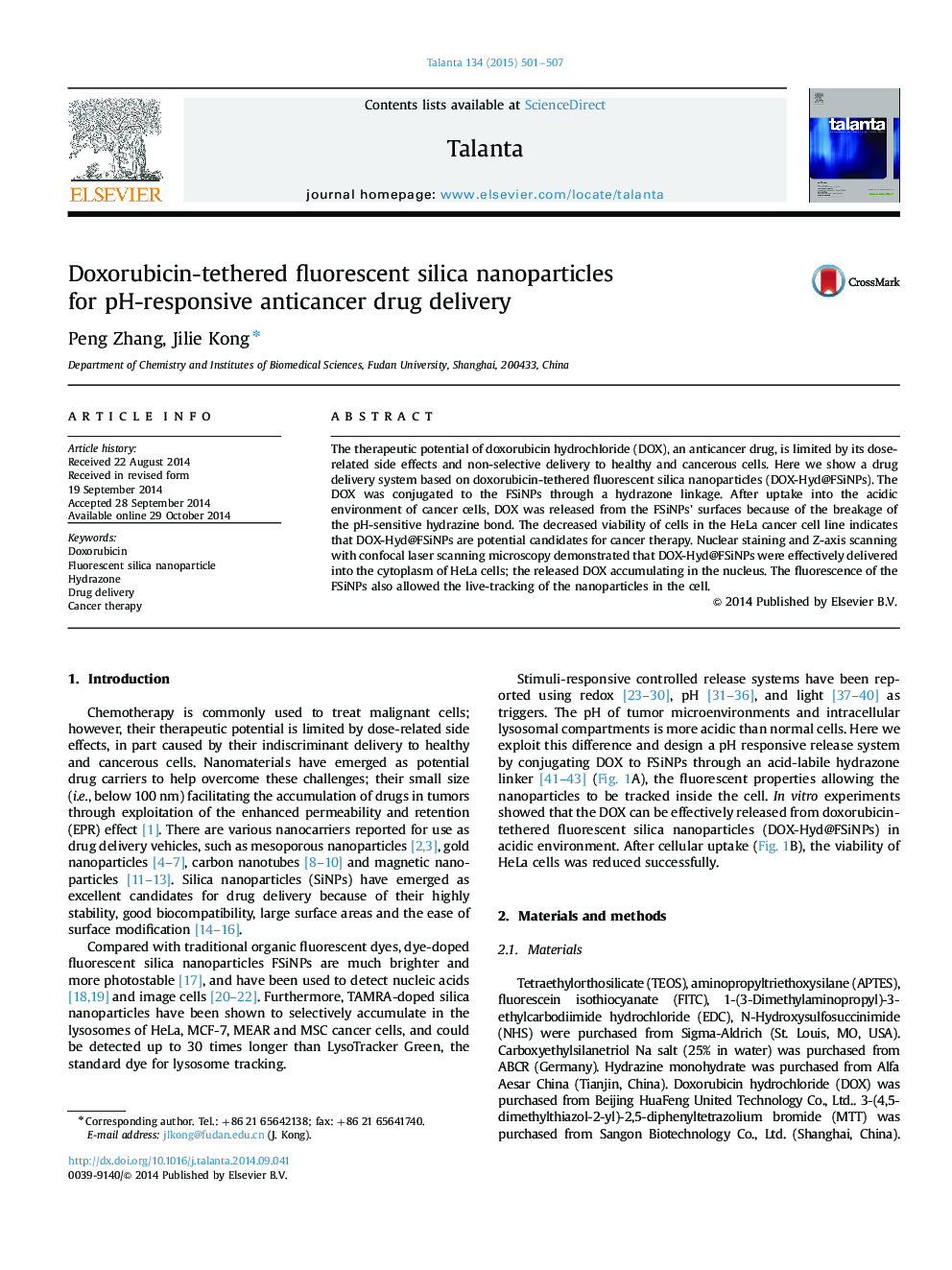| Article ID | Journal | Published Year | Pages | File Type |
|---|---|---|---|---|
| 1244111 | Talanta | 2015 | 7 Pages |
•A nanocomposite-based pH controlled drug delivery and release system was successfully developed.•Hydrazine@FSiNPs showed little cytotoxicity even at high concentrations.•The intracellular localization of the DOX-Hyd@FSiNPs nanocomposites can be visualized by means of confocal laser scanning microscopy (CLSM).
The therapeutic potential of doxorubicin hydrochloride (DOX), an anticancer drug, is limited by its dose-related side effects and non-selective delivery to healthy and cancerous cells. Here we show a drug delivery system based on doxorubicin-tethered fluorescent silica nanoparticles (DOX-Hyd@FSiNPs). The DOX was conjugated to the FSiNPs through a hydrazone linkage. After uptake into the acidic environment of cancer cells, DOX was released from the FSiNPs’ surfaces because of the breakage of the pH-sensitive hydrazine bond. The decreased viability of cells in the HeLa cancer cell line indicates that DOX-Hyd@FSiNPs are potential candidates for cancer therapy. Nuclear staining and Z-axis scanning with confocal laser scanning microscopy demonstrated that DOX-Hyd@FSiNPs were effectively delivered into the cytoplasm of HeLa cells; the released DOX accumulating in the nucleus. The fluorescence of the FSiNPs also allowed the live-tracking of the nanoparticles in the cell.
Graphical abstractFigure optionsDownload full-size imageDownload as PowerPoint slide
